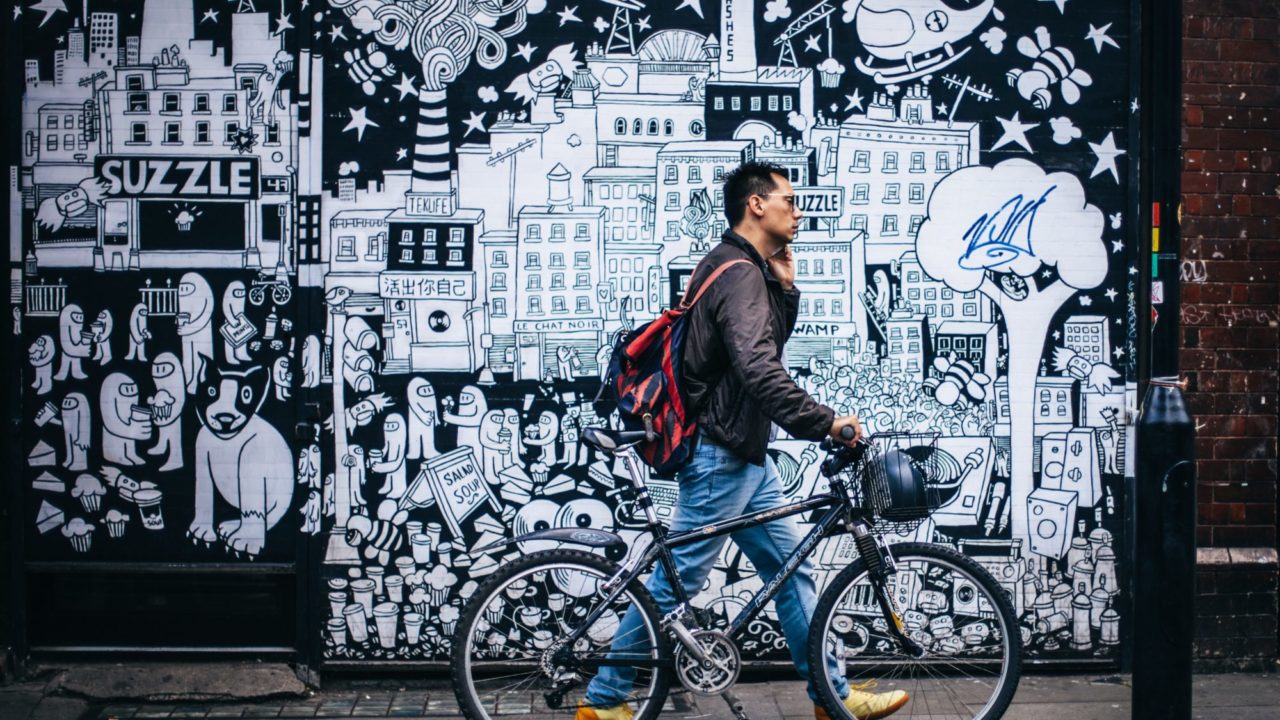
With Axel Lambert, project manager at the Club Villes et Territoires Cyclables: an association of local authorities, specialised in the field of active mobility. Their mission is to advise communities in the development of their cycling and pedestrian policies.
Temporary facilities and their impact on bicycle use
In April 2021, there will be between 600 and 700 km of temporary installations on French territory. These coronalanes were developed because communities were concerned about the shift from public transportation to car travel. Indeed, the pandemic has led to the abandonment of public transport for reasons of crowding and lack of social distancing.
In response to this pressure, some communities have been quick to set up temporary facilities – also known as coronalanes – to encourage cycling. Although France has few coronalanes, it currently has 51,000 km of bicycle lanes and greenways.
“The coronalanes are located in strategic areas, some kilometres are additions on already existing cycling networks which has boosted cycling. These facilities have accompanied the development and significant increase in bicycle use. This is the case in many cities such as Paris, Lyon or Strasbourg. “In 2020, the use of bicycle facilities has been estimated at more than 27%,” explains Axel.
Other initiatives have also contributed to this development, such as the ‘coup de pouce vélo’, which allowed French people to receive a grant of up to 50 euros for the repair of a bicycle.
“The study conducted by the Club Villes et Territoires Cyclables, based on the year 2020, indicates that 148 of the communities surveyed are interested by the matter of coronalanes and would like to develop concrete projects. Of these 148 communities, 75% have actually launched a development project,” says Axel.
Differences between rural and urban areas
These temporary developments are an essentially urban phenomenon. Transitional bicycle facilities have been more numerous and more advanced in large cities than in less populated areas.
“As of December 2020, 85% of urban communities surveyed had completed at least part of their coronalanes projects, compared to only 40% of rural communities. Also, three times as many urban communities as rural communities reported having a development project underway.”
Rural areas have less density, less public transportation, and fewer health issues related to crowding and fear of motor vehicle pollution. At the same time, these communities face more technical and budgetary difficulties. This problem of resources, and in particular personnel, is also taken up by the State, which has set up an energy saving certificate – the AVELO 2 program – which makes it possible to help and co-finance actions to develop cycling in sparsely populated areas.
“Nevertheless, our study shows that several small territories – such as Bayeux, Charleville-Mézières or Agnos – have invested in projects to develop transitional lanes for bicycles as well as for pedestrians,” explains Axel.
The legacies of temporary facilities for communities and users
There are several:
- Sustainability: communities are committed and investing. Indeed, the majority of them have launched these facilities on a temporary basis and have found them to be effective. They have therefore decided to upgrade them by replacing the yellow markers and markings with more qualitative arrangements.
Some examples:
→ Lyon approved the continuation of 60 km of cycling and transition facilities.
→ Paris has maintained all temporary installations.
→ Saint-Malo, a regional city, has developed a two-way bicycle lane on a busy road on the Sillon and has decided to transform this project into an urban project.
Some communities have even decided to develop more temporary facilities, such as Le Creusot, which has announced the development of several kilometres of bicycle lanes. - Innovative bicycle facilities: these experiments have freed up the imagination of local authorities, which have shifted towards ambitious facilities that were not seen before in France. In particular, Dutch intersections with safe islands for cyclists, as in Le Havre, the Porte de Saint-Cloud in Paris or the Pompadour intersection in Cergy.
- Another positive consequence is a movement towards active mobility: some communities have not developed coronalanes but are considering the use of bicycles as a mode of transportation. “One fifth of the local authorities responding indicate that they want to develop a cycling scheme in order to increase the use of this means of transport.” Says Axel.
- A change in the way bicycle facilities are built: infrastructure is created and developed on an opportunistic basis, and the traditional method of building a bicycle lane is quite time consuming, taking on average between 2 and 4 years. With temporary facilities, communities have the opportunity to test and experiment quickly. A bicycle lane can be developed in a few months, evaluated by users and various associations, modified and then sustained or removed if is inadequate.
“Ninety percent of the communities responding to our survey want this tactical urbanism, initially related to the pandemic, to persist and be able to be developed on an ongoing basis.” - The transformation of the relationship to local democracy: “For a citizen, it is complicated to visualise the concrete future of a planned project and to appropriate it, with these experiments there is a real user experience which enriches the public debate. Several communities, such as Mulhouse or the city of Nantes, have developed participatory processes to evaluate the transitional cycling facilities installed within their city.”

